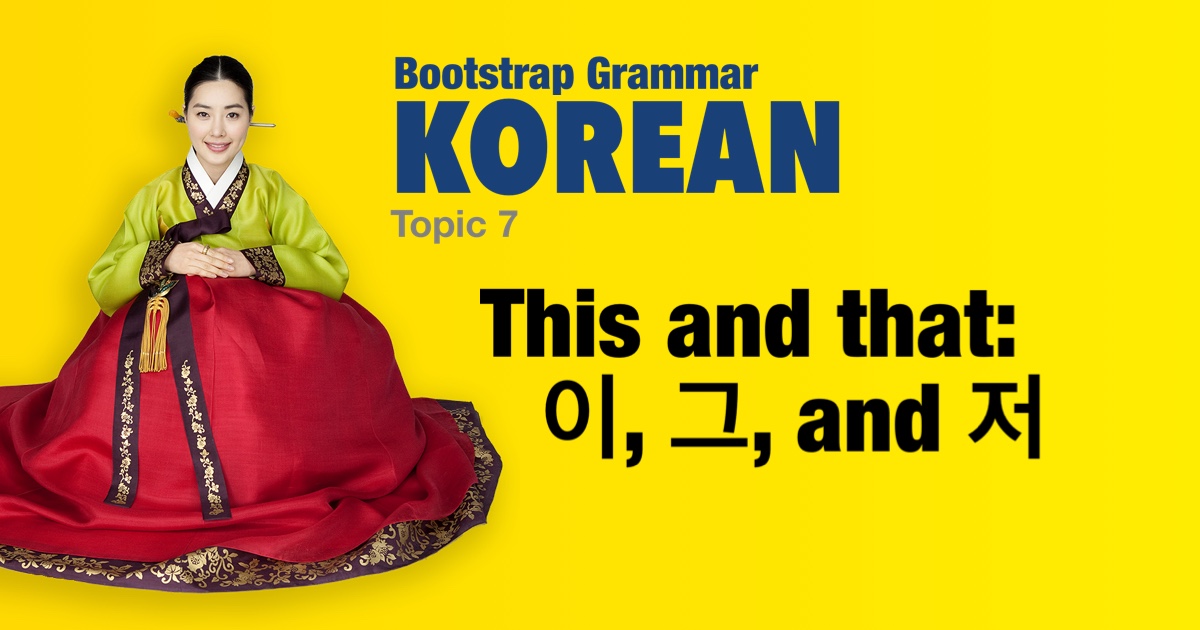Korean grammar - This and that: 이, 그, and 저 |
|||
|
|||
Pattern: 이, 그 or 저 + Noun Korean has three common demonstratives that correspond to 'this', 'that', and 'that over there'. • 이 (this) for an object close to the speaker. • 그 (that) for an object closer to the listener than the speaker. -- 그 is also used when the speaker has already mentioned the object. Like 'the' in English. • 저 (that) for an object over there, far from both the speaker and listener. |
| Examples: | |
|
이 학생은 가방이 있어요.
This student has a bag. |
|
|
저 선생님은 차 있어요?
Does that teacher have a car? |
|
|
그 소녀는 남동생 없어요.
That girl doesn't have a younger sibling. |
|
|
저 곰은 꼬리가 없어요.
That (distant) bear doesn't have a tail. |
|
|
이 남자는 우산이 없어요.
This man doesn't have an umbrella. |
|
|
이 꽃은 빨간색이에요.
This flower is red.
|
|
|
그 학생은 한국인이에요.
That student is Korean. |
|
|
저 남자는 변호사이에요.
That (unseen) man is a lawyer |
|
|
저 지하철은 역 아주 멀어요.
That (distant) subway station is very far away.
|
|
|
저 사람은 한국인이에요?
Is that (distant) person a Korean? |
|
 |
|



